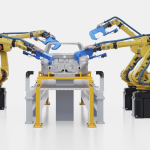For years, industry leaders have emphasized that supply chains are more than just an operational necessity—they are a strategic driver of growth and competitive advantage. However, new research suggests that a disconnect remains between C-suite executives and supply chain leaders on the true value of supply chain investment.
A recent survey conducted by Wakefield Research on behalf of LeanDNA found that while 70% of C-level executives view the supply chain as a growth driver, 30% still see it primarily as a cost center. Among supply chain leaders, 85% believe their function fuels business growth, highlighting a 15-point perception gap between those managing supply chains and those making high-level business decisions.
This misalignment has real consequences. Without clear recognition from the executive level, supply chain initiatives may not receive the funding, strategic alignment, or leadership engagement needed to drive long-term success.
A Communication Gap Limits Supply Chain Influence
The survey revealed a broader issue: supply chain leaders struggle to effectively communicate their value to executive leadership. A striking 99% of C-level executives and 100% of supply chain leaders agree that supply chain leaders find it difficult to articulate the business impact of their function.
That communication gap may explain why leadership remains skeptical of the link between supply chain resiliency and business growth. The survey found that 94% of supply chain leaders and 85% of C-suite executives agree that skepticism exists at the highest levels of business decision-making.
Responsibility for bridging this divide appears to fall more heavily on supply chain leaders. More than half of executives (55%) and 61% of supply chain leaders believe that it is the role of supply chain professionals—not the C-suite—to ensure that supply chain strategy is effectively communicated and understood across the organization.
Tariffs: A Divisive Issue Between Executives and Supply Chain Leaders
The survey also revealed contrasting views on trade policy. While both groups acknowledge that tariffs present a mix of challenges and opportunities, C-suite executives are more likely to view tariffs as a net positive.
Thirty-one percent of C-level executives believe tariffs represent a full opportunity, compared to just 18% of supply chain leaders. A majority of both groups—75% of supply chain leaders and 60% of executives—see tariffs as a combination of risk and opportunity.
The timing of the survey provides context for these perspectives. Conducted in early February—during a temporary pause on U.S. tariffs against Canada and Mexico—the responses capture a moment of uncertainty surrounding long-term trade policies. By March, tariffs were reinstated before another pause was introduced for products complying with the U.S.-Mexico-Canada Agreement, underscoring the unpredictability of global trade policy.
Bridging the Gap: Aligning Supply Chain and C-Suite Priorities
The findings reinforce a fundamental truth: supply chain must be positioned as a core business strategy, not just an operational function. The persistent disconnect between executive leadership and supply chain decision-makers limits investment, slows innovation, and prevents companies from leveraging supply chain as a competitive advantage.
Bridging this divide will require more than just better reporting or data visualization tools. Supply chain leaders must engage with executive teams in a way that translates operational efficiencies into clear financial impact, risk reduction, and market opportunities.
For businesses to remain competitive, supply chain priorities must be fully aligned with enterprise-level goals. Companies that close the gap between strategy and execution will be positioned to drive faster decision-making, better resilience, and long-term growth.







